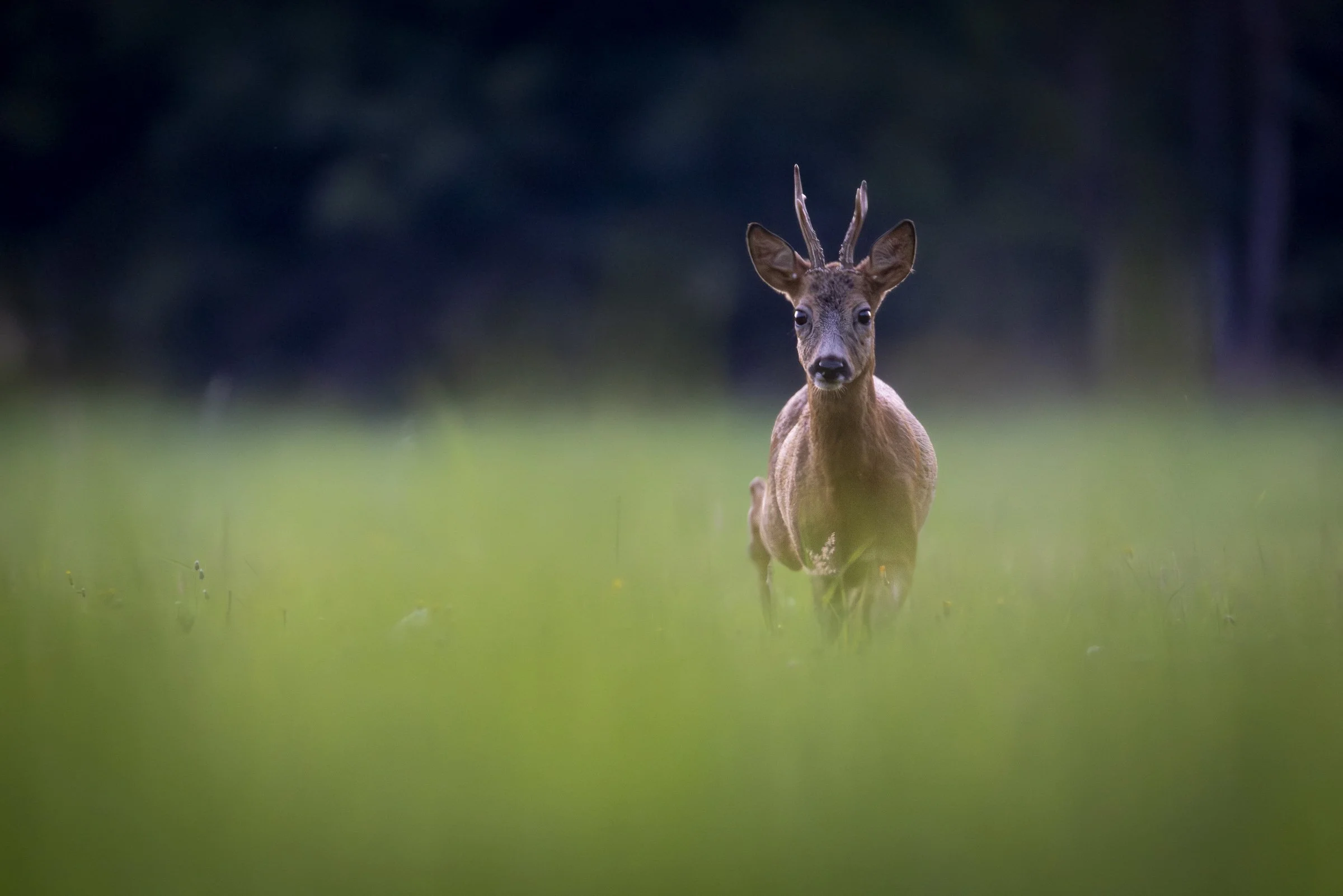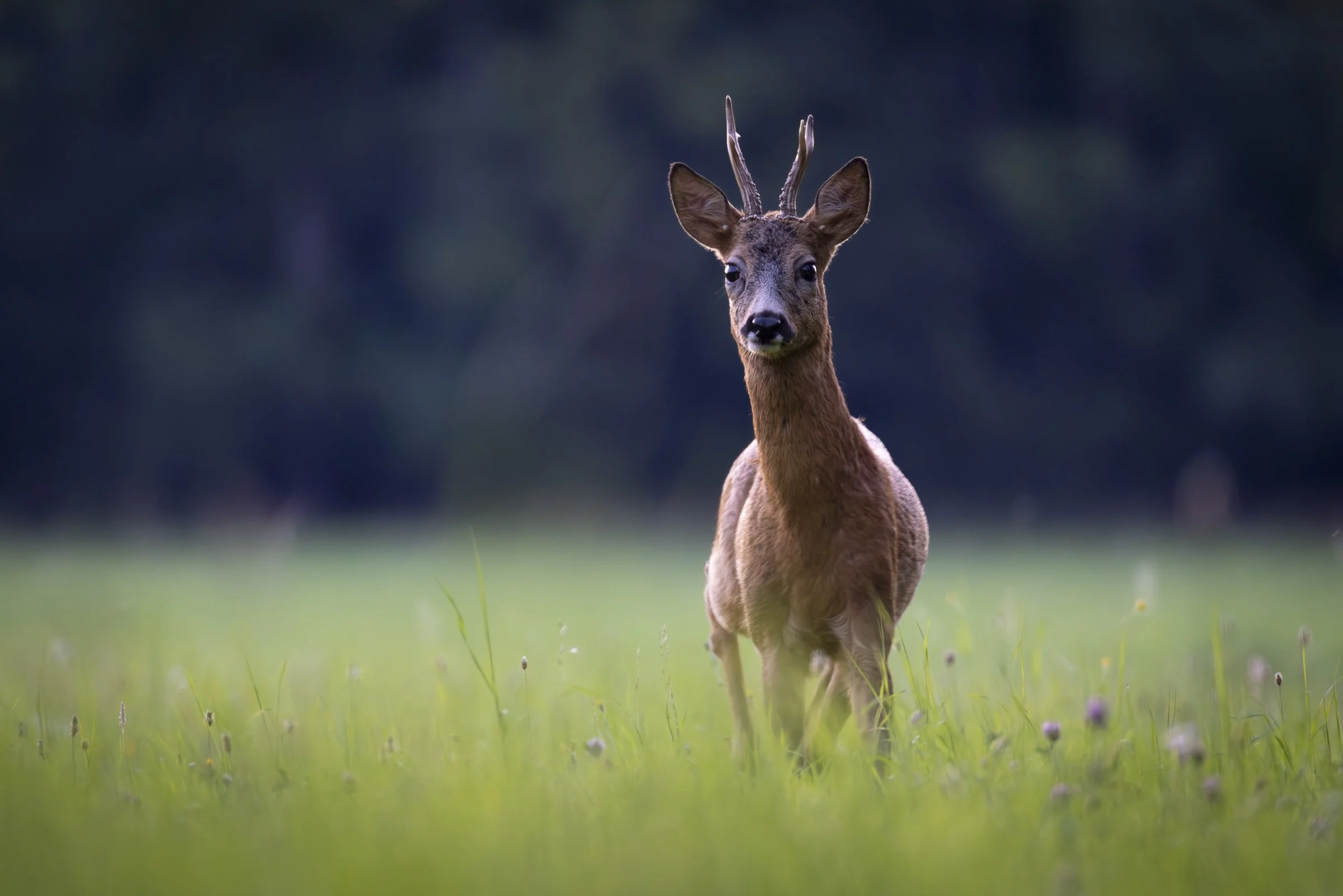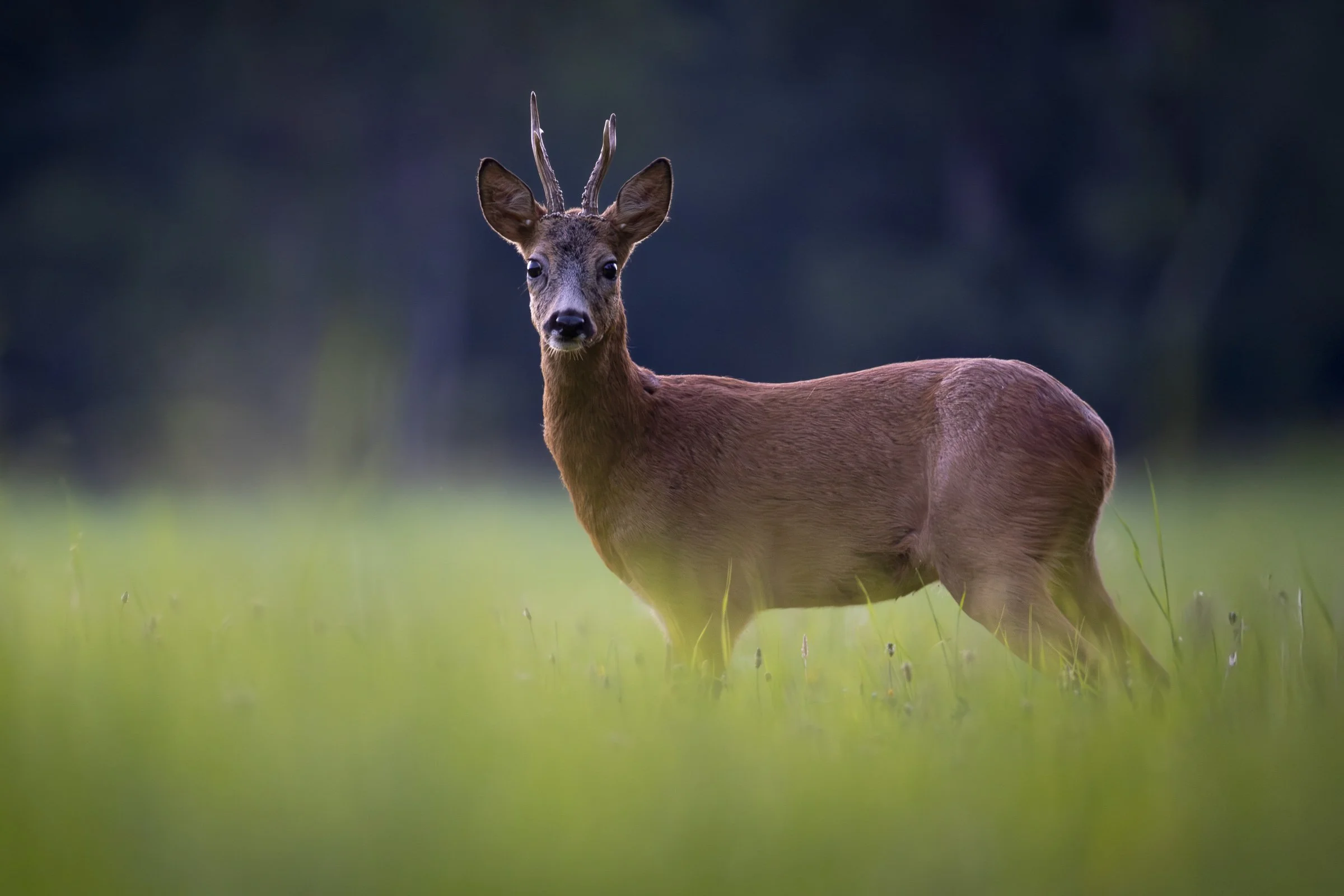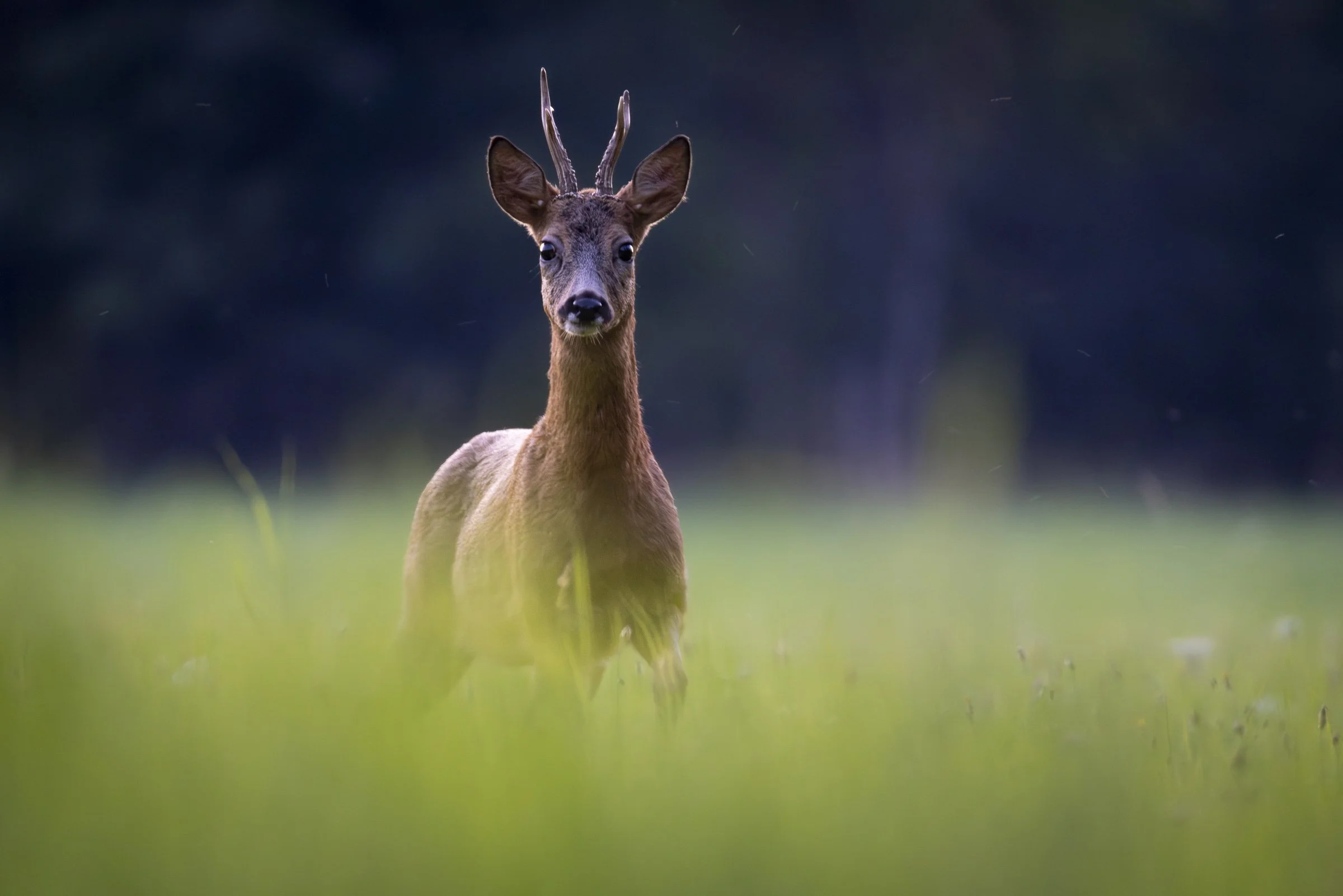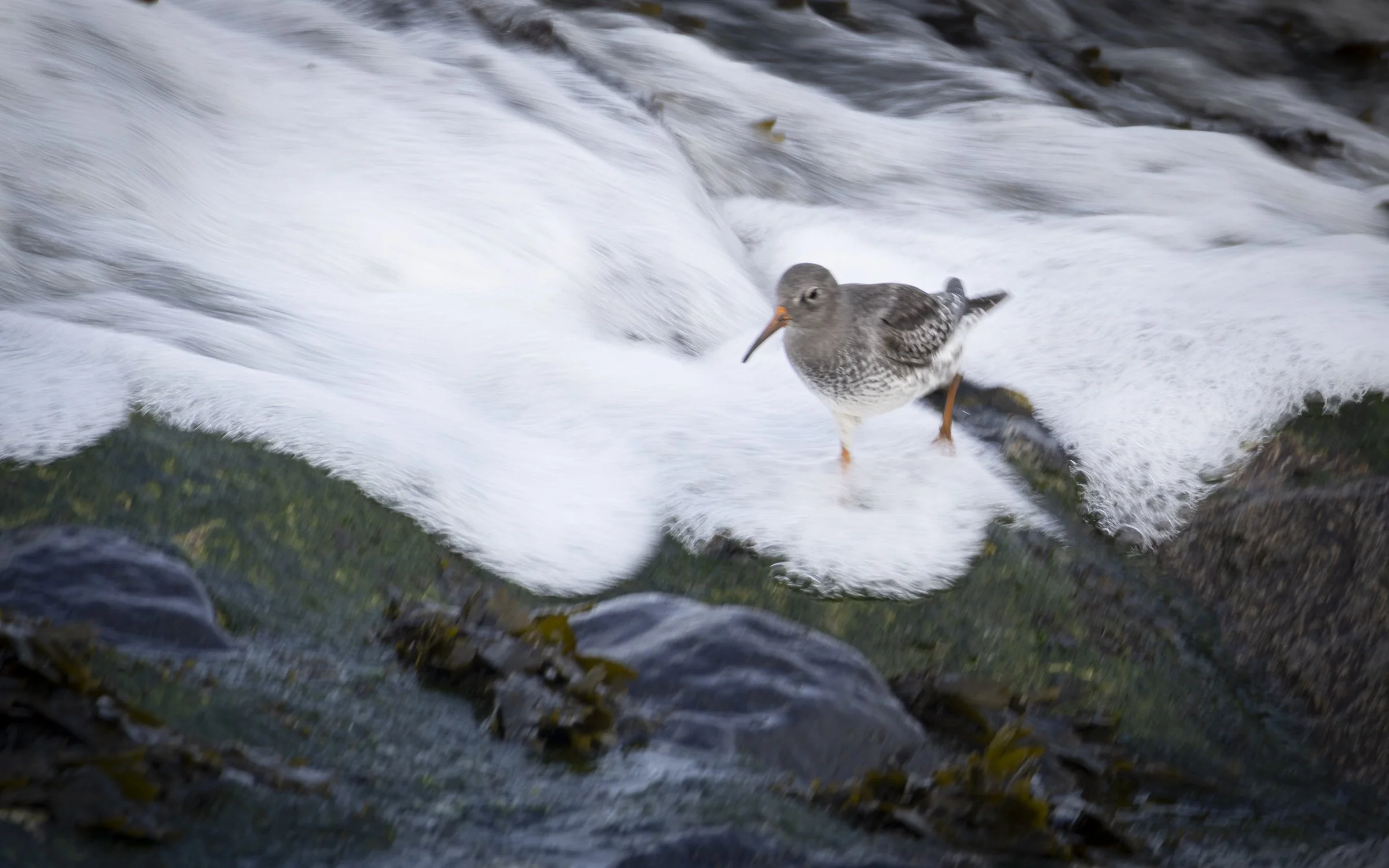Mid August I met a very inquisitive young roe deer: It was very late in the evening. I had been sitting well hidden in the tall grass and shadows on the edge of a clearing in a local wood for quite some while, when first a doe (the female roe deer) appeared on the clearing to feast. It eyed me and then without much hesitation went out in the open grass space. A little later, the buck appeared. At first, he did not notice me at all. But when he did, the magic started to happen.
Meeting a very inquisitive young buck
The young buck approached me like an inquisitive young dog. At first in a straight line and with a resolute pace that showed his determination to figure out who I might be. The closer he came, the more he slowed down his pace.
Then he came to a halt: Scenting, trying to get my wind, looking. He approached closer. Stopped again. Approached again, until he was only a few meters away. All the while I sat and waited. Since I was sitting at the ground, I was not taller than the animal. True eye-level. He seemed ponderous. Should he approach even closer or back off? Would his inquisitiveness win or his caution? He approached me even closer, backed off a little, barked at me and then approached again. I had no choice but to wait what he would decide was best for him. Backing off myself would have ment to get up and surely scare him away. The young buck was flehming, trying to really get my scent then one last time ventured closer. Stood still, turned around and went off to eat in peace and quiet. I sat and watched really happy for another 15 minutes and then really slowly and cautiously backed off. It was a beautiful experience.
